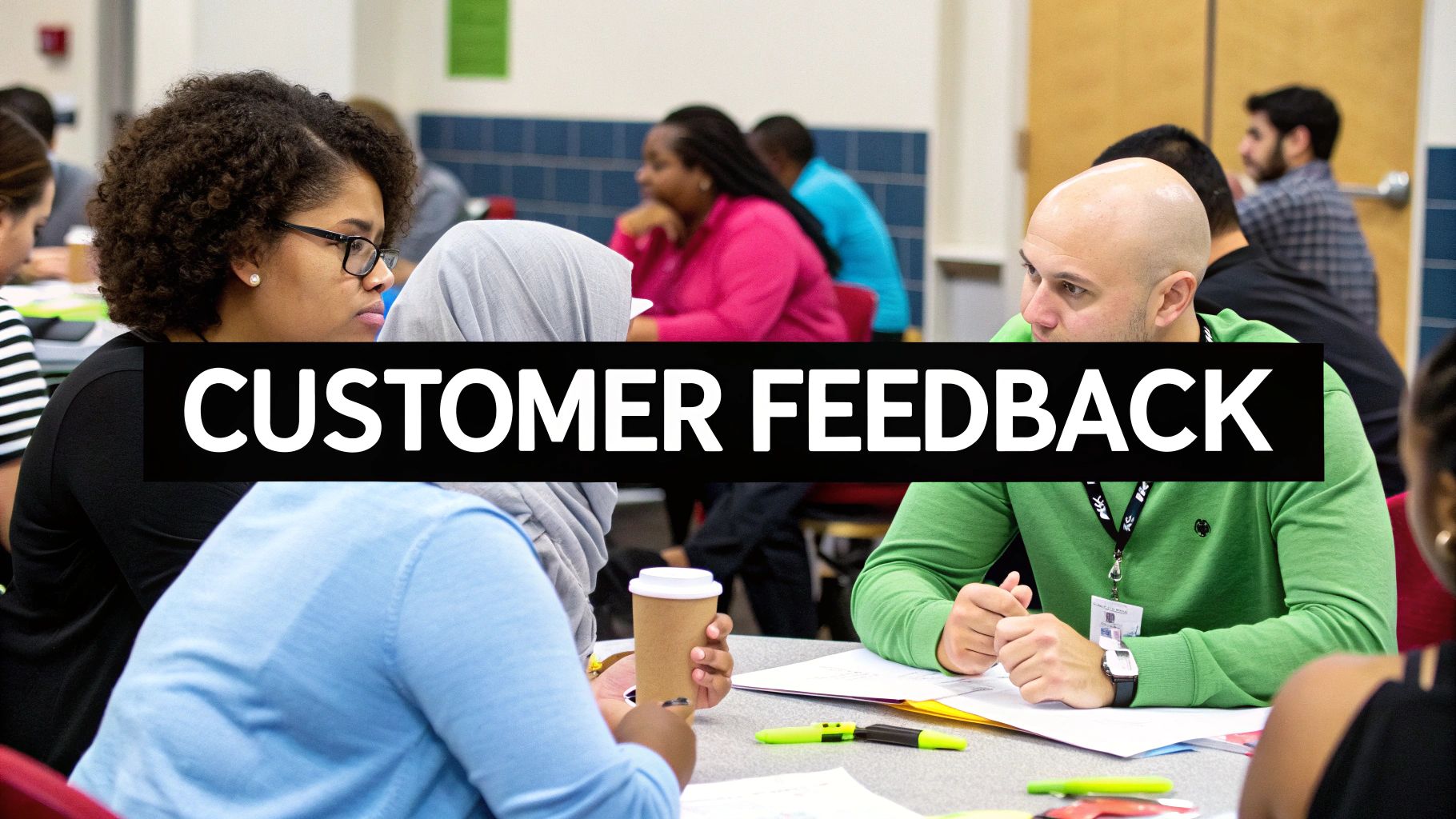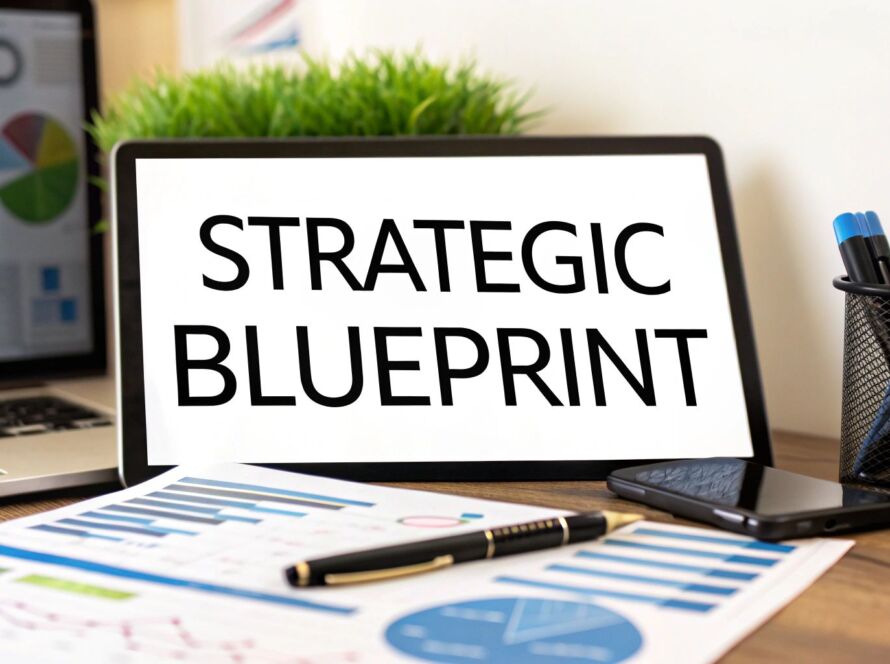Understanding Why Business Validation Is Non-Negotiable

Starting a business without validating your idea first is like building a house on unstable ground. No matter how brilliant your concept may seem, rushing ahead without proper validation can lead to wasted time, money and effort. Many aspiring entrepreneurs learn this lesson the hard way, but it doesn't have to be that way. Let's explore why thorough business validation needs to be your top priority from day one.
The High Stakes of Startup Failure
The numbers don't lie – around 90% of startups end up failing, with inadequate validation being a key factor. This goes beyond just unfulfilled dreams – it means significant financial losses that could have been prevented. Take Quibi, for instance. Despite raising $1.75 billion in funding, this short-form video platform shut down within just one year because they hadn't properly validated their core assumptions about what users actually wanted. Their story shows that even massive funding can't save a business that misses the mark with its target market.
Learning From Those Who've Been There
Successful founders consistently point to thorough validation as a cornerstone of their achievements. By actively seeking and responding to market feedback early on, they spot potential issues before investing too deeply. In contrast, many who've experienced failure admit they skipped proper validation, often because they were too excited about their idea to look at it objectively. The key difference? Successful entrepreneurs set aside their personal attachment to get real, unbiased feedback about their concept's viability.
The Psychology of Validation
The validation process involves more than just market research – it requires overcoming our own mental roadblocks. Many founders naturally gravitate toward information that supports their existing beliefs while dismissing contradictory evidence. Fear of failure can also prevent honest assessment of potential weaknesses. By recognizing these common psychological pitfalls, you can approach validation with clearer eyes and make more objective decisions about your business concept.
Avoiding Preventable Failures
Effective validation is an ongoing journey, not a one-time checkbox. It means continuously testing your assumptions, gathering real user feedback, and adjusting your approach based on what you learn. Research by Skynova found that many failed founders wished they'd done more thorough research before launch. By taking a methodical approach to validation before committing major resources, you can identify potential problems early and refine your business model accordingly. This proactive stance dramatically improves your odds of building something that truly resonates with your target market and stands the test of time.
Mastering Market Research That Actually Works

Understanding why business validation matters is only half the battle – you need to know how to validate your idea effectively through solid market research. Moving beyond basic Google searches, successful founders rely on proven methods to gather real insights that guide their decisions.
Identifying Your Target Audience and Their Needs
The foundation of validating any business idea starts with truly understanding your target audience. This means going deeper than surface-level demographics to uncover what drives their behaviors and frustrations. For instance, a productivity app might seem targeted at "busy professionals" broadly, but digging deeper reveals distinct groups like freelancers managing multiple clients, managers coordinating teams, or entrepreneurs juggling various responsibilities. Each group faces unique challenges that require specific solutions. Getting crystal clear on these nuances helps you craft marketing that resonates and develop features your users will love.
Leveraging Online Communities and Customer Interviews
Some of the richest market insights come from engaging with online communities and having direct conversations with potential customers. Places like Reddit, niche Facebook groups, and industry forums let you observe authentic discussions about problems in your market. But don't just watch from the sidelines – reach out and talk to people. When conducting customer interviews, ask open questions like "Walk me through your biggest challenges with current solutions" rather than leading questions about your specific idea. This approach reveals genuine pain points and opportunities.
Interpreting Market Signals and Avoiding Confirmation Bias
Smart market research involves looking at the bigger picture – industry trends, competitor moves, and emerging technologies that could impact your business. However, be careful not to fall into the trap of confirmation bias, where you only see evidence that supports your existing beliefs. Make it a practice to actively seek out opposing viewpoints and information that challenges your assumptions. This balanced perspective leads to better decision-making and helps you spot both opportunities and potential pitfalls early.
Learning From Successes and Failures
Real-world examples offer invaluable lessons in market validation. Take Slack, which began targeting gamers before discovering their true market was businesses seeking better team communication. Or consider Quibi's costly misstep – despite $1.75 billion in funding, they failed because they didn't truly understand their target audience's viewing habits. These cases show that success depends not on the size of your investment, but on how well you understand and serve real market needs. By learning from both triumphs and failures, you can better position your business for sustainable growth.
The Strategic 30-Day Validation Blueprint
You can validate a business idea in just 30 days through focused testing and learning. By breaking down the validation process into weekly goals, you can quickly determine if your concept has real potential – without getting lost in endless research. Let's explore this proven four-week roadmap that mirrors how successful startups test their ideas.
Week 1: Defining Your Target Audience and Initial Testing
Start by deeply understanding exactly who would use your product or service. Look beyond basic demographics to uncover meaningful details about your ideal customers. If you're creating a fitness app, don't just target "people who want to exercise" – specify whether you're serving beginners, athletes, or those in rehabilitation. This clarity shapes everything that follows.
Begin testing your core assumptions by reaching out to your network on Twitter and LinkedIn. While early feedback from contacts isn't a complete market picture, it provides valuable initial insights. With 90% of startups failing due to inadequate validation, gathering real data from day one is essential.
Week 2: Building Your Early Adopter Community and Refining Your Message
Use week two to expand your reach beyond your immediate network. Create a focused landing page that clearly communicates your value proposition and use it to build an email list of potential early adopters. Share this page in relevant communities on Reddit and Facebook groups to gather diverse perspectives.
Pay close attention to the difference between polite encouragement and genuine buying intent. Someone saying they "like" your idea is very different from them committing to purchase. This distinction helps you refine your messaging to speak directly to real customer needs.
Week 3: Small-Scale Experiments and Iterating Based on Data
Now it's time to run concrete tests to measure actual market demand. Try A/B testing different landing page versions, running small ad campaigns to gauge interest, or offering limited-time pre-orders. Track specific metrics like conversion rates, ad click-throughs, and pre-order numbers.
While your sample size may be small, this quantifiable data provides much stronger validation than anecdotal feedback. According to Skynova's 2022 report, 58% of failed founders wish they had done more research before launching. Let the data guide your strategy adjustments.
Week 4: Analyzing Results and Pivoting if Necessary
The final week focuses on honestly evaluating all the data and feedback collected. Compare your initial assumptions against the market's actual response. Look for patterns that reveal whether your core idea resonates with customers.
If the data suggests a pivot is needed, embrace it – changing direction based on market feedback isn't failure, it's smart business. Consider how Slack evolved from a gaming company to a business communication platform by listening to their users. This kind of evidence-based pivot can lead to breakthrough success.
By following this focused 30-day process, you'll build a strong foundation of market validation before investing heavily in development. This strategic approach helps minimize risk while maximizing your chances of launching something customers truly want.
Creating and Testing Your Minimum Viable Product
Now that you've done your market research and found your target audience, it's time to build and test a Minimum Viable Product (MVP). Think of an MVP as your product's first draft – it has just the core features needed to solve your customers' main problem. This smart approach lets you get real feedback from actual users before investing too much time and money into building something people may not want.
Defining Your Core Value Proposition and Essential Features
Start by getting crystal clear on the specific problem you're solving and how your solution stands out from what's already available. This clarity will help you pick which features absolutely must be in your MVP. For instance, if you're creating a project management tool, focus first on the basics like creating tasks, assigning them to team members, and tracking progress. You can always add more advanced features like detailed reports or complex scheduling tools later based on what your users actually need.
Choosing the Right MVP Development Method
The best way to build your MVP depends on what you're creating and what resources you have. For web applications, platforms like Webflow or Bubble let you create working versions without writing code. If you're making a physical product, services like 3D printing can help you quickly create prototypes. Sometimes, even a simple landing page that describes your idea and collects email signups can work as an MVP to test interest. This early feedback helps guide where to focus your development efforts.
Gathering and Interpreting User Feedback on Your MVP
Once you have your MVP ready, actively seek honest feedback from potential customers. Run user interviews, set up beta testing programs, and watch how people actually use your product. Remember, even critical feedback is incredibly valuable – it shows you exactly what needs improving. Take Slack for example – they originally aimed their platform at gamers but discovered through user feedback that businesses needed it more. This insight completely changed their direction and led to their success. Pay special attention to patterns in the feedback – they point to your most important areas for improvement.
Iterating Based on MVP Testing Results
Testing your MVP isn't just a one-time thing – it's an ongoing process of improvement. Use the feedback you get to refine your product, add what's missing, and remove what isn't working. This step-by-step approach ensures you're building something people truly want and need. Just like Slack adjusted their entire business based on user input, be ready to adapt your product as you learn what really matters to your customers. Staying responsive to real user feedback is often what separates successful startups from those that struggle to find their footing.
Competitive Analysis That Reveals Real Opportunities

Once you've validated your MVP, the next crucial step is understanding your competition inside and out. This means doing more than just creating a list of competitors – you need to deeply examine their strategies, spot their strengths and weaknesses, and find gaps you can fill. By taking a systematic approach to competitive analysis, you'll uncover real opportunities and validate that there's room for your solution in the market.
Mapping Your Competitive Landscape
Start by identifying both direct and indirect competitors who serve your target market. Direct competitors offer similar solutions to the same customers you want to reach. Indirect competitors solve the same customer problems but in different ways. For example, a plant-based burger company competes directly with other meat alternatives, but also indirectly with traditional beef burgers and other food options. Don't ignore indirect competition – they can reveal important market shifts, just like streaming services did to cable TV providers.
Analyzing Competitor Strengths and Weaknesses
Look beyond basic feature comparisons when evaluating competitors. Examine their brand reputation, pricing strategies, marketing channels, customer service quality, and technical capabilities. A SWOT analysis helps organize these insights. You might find that a competitor has strong brand recognition but weak online presence – showing where you could potentially stand out. These nuanced observations help shape your strategy.
Understanding Competitor Business Models
Study how your competitors actually make money and deliver value. What revenue streams do they rely on? Who are their key partners? How do they distribute their products? This deeper understanding reveals both vulnerable areas and differentiation opportunities. Some may depend heavily on paid ads while others focus on organic social reach. Look at how subscription boxes created new business models that traditional retail hadn't considered.
Spotting Gaps in the Market
Thorough competitive research often reveals unmet customer needs and market gaps that represent real opportunities. Maybe all competitors overlook a specific feature customers want, or perhaps they ignore an underserved market segment entirely. Use these insights to guide your product development and marketing. Understanding gaps helps confirm that your unique solution fills a genuine market need.
Refining Your Value Proposition and Creating Differentiation
Apply your competitive insights to sharpen what makes your solution special and valuable to customers. Maybe you'll focus on providing better quality, more personal service, or an original approach to solving customer problems. The key is clearly communicating why customers should choose you. This could mean highlighting a missing feature that competitors don't offer or emphasizing values like sustainability that resonate with your target market. When you deeply understand the competitive landscape, you can position your solution to solve real problems in ways that truly set you apart.
Validating Your Business Model for Long-Term Success

Moving from a validated idea to a solid business model requires looking beyond just the initial concept. Success depends on understanding the key financial pieces – from pricing to customer costs to revenue growth. Let's explore practical ways to build a business that can grow and thrive.
Pricing Strategy Validation: Finding the Sweet Spot
Getting your pricing right is about striking the perfect balance. Set prices too low and customers may question your value. Go too high and you'll drive them away. For instance, a new project management tool could experiment with different feature tiers and price points to find what resonates with their target market. Testing various approaches – whether subscription, tiered, or value-based pricing – helps find the model that works best for your specific offering and audience.
Calculating Customer Acquisition Cost (CAC): Understanding Your Investment
The cost of bringing in new customers can make or break your business. By tracking your spending on marketing, sales, and related activities, you'll understand exactly what it takes to grow your customer base. Compare this to how much revenue each customer generates over time (their lifetime value or LTV). When customers generate significantly more value than what you spend to acquire them, you're on the right track. But watch those acquisition costs carefully – they can quickly eat up resources, especially early on.
Projecting Realistic Revenue Growth: Avoiding Overly Optimistic Forecasts
While it's good to aim high, being realistic about growth keeps you grounded. Look closely at your total market size, growth trends, and what share you can reasonably capture. Remember to factor in things like customer churn and market saturation. A business serving a small niche will likely grow differently than one in a booming market. Let solid market research guide your financial planning rather than wishful thinking.
Testing Revenue Models and Unit Economics: Ensuring Scalability
Not all revenue models work the same way. Whether you choose subscriptions, freemium, or advertising-based approaches, test them with real customers to see what fits. Pay close attention to unit economics – what it costs to serve one customer versus the revenue they bring in. When you make more from each customer than you spend on them, you've found a model that can scale. This helps confirm your business idea works before making major investments in growth.
Validating Your Go-to-Market Strategy: Refining Your Approach
Before launching broadly, test different ways to reach and convert customers. Start small, observe what works, and improve based on real feedback. You might discover that social media outperforms email for your specific audience. This focused testing helps you optimize your approach and reduces the risk of a failed launch. Building your strategy step by step creates a stronger foundation for lasting success.
Ready to bring your business vision to life and validate your path to success? MarkBox Studios specializes in helping founders and business owners like you transform ideas into thriving businesses. From MVP development to scalable solutions, we offer a creative and expert approach to nurturing growth. Visit us at https://www.markboxstudios.com to learn more and start building your future today.



